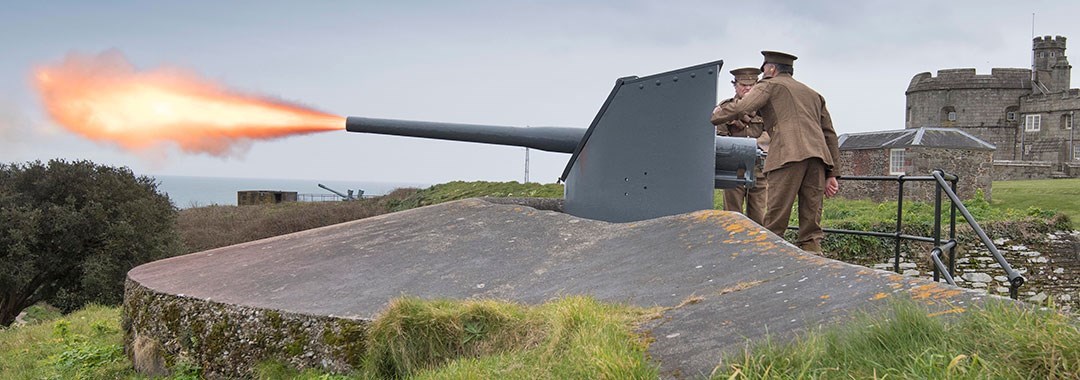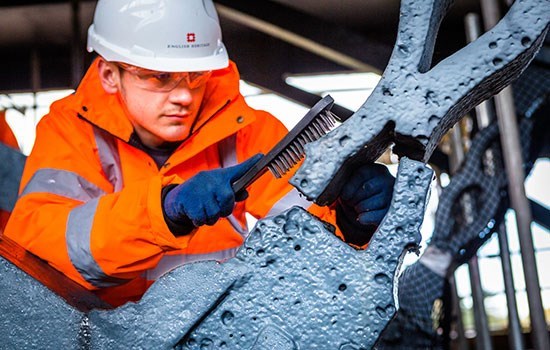10/04/2018
David Attenborough Unveils Blue Plaque for Hugh Carleton Greene
Sir Hugh Carleton Greene was a revolutionary at the BBC, overseeing a new age of the organisation and introducing an increasing number of risk-taking programmes including 'Cathy Come Home'.
Veteran broadcaster and naturalist, Sir David Attenborough, will pay tribute to his former colleague, Sir Hugh Carleton Greene, when he unveils an English Heritage blue plaque today.
The plaque was installed at Greene's former London home at 25 Addison Avenue, Holland Park. The journalist lived here for 11 years during the prime of his career as a broadcasting executive.
Greene held several positions at the BBC including Director of News and Current Affairs and later Director-General. It was in this latter role that he oversaw a new age of the organisation including the launch of BBC Two in 1964 and colour transmission
Greg Dyke, English Heritage Blue Plaque Panel Member and former Director-General of the BBC, said:
'Hugh Carleton Greene was one of the great Director-Generals of the BBC.
'He took over at the end of the 50s when the BBC was in crisis. Its share of the audience had collapsed following the arrival of ITV. Yet by the time he left, the BBC had re-invented itself and in the process invented popular British television in areas like drama and situation comedy as well as allowing the BBC to challenge the status quo in Britain for the first time with shows like That Was The Week That Was.
'This was the end of the age of deference. The BBC changed dramatically in the 60s thanks to Carleton Greene and he set the tone for television for the next 30 years.'
A CAREER THAT MADE HEADLINES
Born in Berkhamsted, Hertfordshire, in 1910, Hugh Carleton Greene led a successful academic career and graduated from Merton College in Oxford in 1933. He worked as a journalist for the New Statesman and the Daily Herald and later he moved to Berlin to work for the Daily Telegraph. He became its chief correspondent in 1938.
Greene was expelled from Nazi Germany in May 1939 and then reported the news from Warsaw and Amsterdam, in each case fleeing the advancing German forces. On his return to England he joined the BBC in October 1940 and headed its German news service. By 1960 he was appointed to the role of Director-General.
However, Greene was affronted by the new appointment of the former ITV Chairman Lord (Charles Hill) to the BBC's board of governors in 1967. After broadcasting risky TV programmes such as Cathy Come Home in which a young mother bears a child out of wedlock and Till Death Us Do Part, Greene was against the new cautious approach to programming. He resigned in 1969.
Greene died of cancer at the King Edward VII hospital in 1987, aged 77.
Find out more about Sir Hugh Carleton Greene by visiting our blue plaques page.
Discover more blue plaques of people who lived and worked in London by downloading our free app from the Apple App Store for iPhone or the Google Play Store for Android.
For more from English Heritage, follow us on Facebook, Twitter and Instagram.
More recent news
-

HELP SAVE ENGLAND'S HISTORIC CANNONS
English Heritage has launched an appeal to save the nation's historic cannons. The call comes as the charity reveal a newly conserved gun at Pendennis Castle.
-

'Eggsclusive Eggs' hidden at English Heritage sites this Easter
English Heritage has partnered with six children's to design exclusive Easter eggs for children to win this Easter.
-

WITNESS CONSERVATION IN ACTION AT THE IRON BRIDGE
A new 50 metre walkway will enable visitors to watch the experts as they repair the Iron Bridge in Shropshire.
